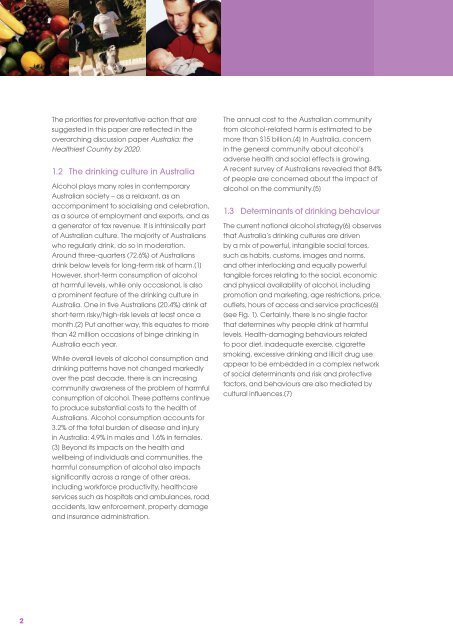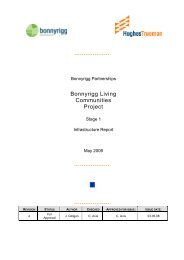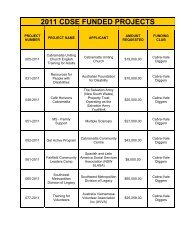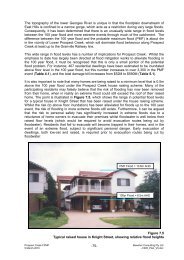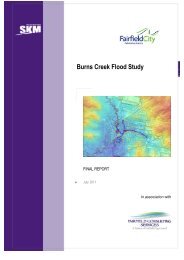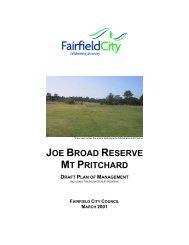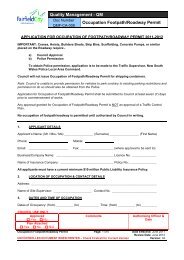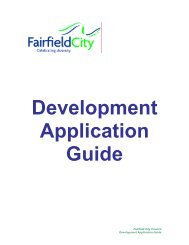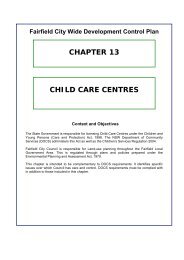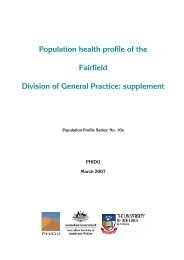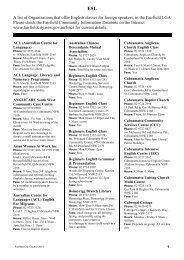Preventing Alcohol-related Harm in Australia - Department of Health
Preventing Alcohol-related Harm in Australia - Department of Health
Preventing Alcohol-related Harm in Australia - Department of Health
Create successful ePaper yourself
Turn your PDF publications into a flip-book with our unique Google optimized e-Paper software.
The priorities for preventative action that aresuggested <strong>in</strong> this paper are reflected <strong>in</strong> theoverarch<strong>in</strong>g discussion paper <strong>Australia</strong>: the<strong>Health</strong>iest Country by 2020.1.2 The dr<strong>in</strong>k<strong>in</strong>g culture <strong>in</strong> <strong>Australia</strong><strong>Alcohol</strong> plays many roles <strong>in</strong> contemporary<strong>Australia</strong>n society – as a relaxant, as anaccompaniment to socialis<strong>in</strong>g and celebration,as a source <strong>of</strong> employment and exports, and asa generator <strong>of</strong> tax revenue. It is <strong>in</strong>tr<strong>in</strong>sically part<strong>of</strong> <strong>Australia</strong>n culture. The majority <strong>of</strong> <strong>Australia</strong>nswho regularly dr<strong>in</strong>k, do so <strong>in</strong> moderation.Around three-quarters (72.6%) <strong>of</strong> <strong>Australia</strong>nsdr<strong>in</strong>k below levels for long-term risk <strong>of</strong> harm.[1]However, short-term consumption <strong>of</strong> alcoholat harmful levels, while only occasional, is alsoa prom<strong>in</strong>ent feature <strong>of</strong> the dr<strong>in</strong>k<strong>in</strong>g culture <strong>in</strong><strong>Australia</strong>. One <strong>in</strong> five <strong>Australia</strong>ns (20.4%) dr<strong>in</strong>k atshort-term risky/high-risk levels at least once amonth.[2] Put another way, this equates to morethan 42 million occasions <strong>of</strong> b<strong>in</strong>ge dr<strong>in</strong>k<strong>in</strong>g <strong>in</strong><strong>Australia</strong> each year.While overall levels <strong>of</strong> alcohol consumption anddr<strong>in</strong>k<strong>in</strong>g patterns have not changed markedlyover the past decade, there is an <strong>in</strong>creas<strong>in</strong>gcommunity awareness <strong>of</strong> the problem <strong>of</strong> harmfulconsumption <strong>of</strong> alcohol. These patterns cont<strong>in</strong>ueto produce substantial costs to the health <strong>of</strong><strong>Australia</strong>ns. <strong>Alcohol</strong> consumption accounts for3.2% <strong>of</strong> the total burden <strong>of</strong> disease and <strong>in</strong>jury<strong>in</strong> <strong>Australia</strong>: 4.9% <strong>in</strong> males and 1.6% <strong>in</strong> females.[3] Beyond its impacts on the health andwellbe<strong>in</strong>g <strong>of</strong> <strong>in</strong>dividuals and communities, theharmful consumption <strong>of</strong> alcohol also impactssignificantly across a range <strong>of</strong> other areas,<strong>in</strong>clud<strong>in</strong>g workforce productivity, healthcareservices such as hospitals and ambulances, roadaccidents, law enforcement, property damageand <strong>in</strong>surance adm<strong>in</strong>istration.The annual cost to the <strong>Australia</strong>n communityfrom alcohol-<strong>related</strong> harm is estimated to bemore than $15 billion.[4] In <strong>Australia</strong>, concern<strong>in</strong> the general community about alcohol’sadverse health and social effects is grow<strong>in</strong>g.A recent survey <strong>of</strong> <strong>Australia</strong>ns revealed that 84%<strong>of</strong> people are concerned about the impact <strong>of</strong>alcohol on the community.[5]1.3 Determ<strong>in</strong>ants <strong>of</strong> dr<strong>in</strong>k<strong>in</strong>g behaviourThe current national alcohol strategy[6] observesthat <strong>Australia</strong>’s dr<strong>in</strong>k<strong>in</strong>g cultures are drivenby a mix <strong>of</strong> powerful, <strong>in</strong>tangible social forces,such as habits, customs, images and norms,and other <strong>in</strong>terlock<strong>in</strong>g and equally powerfultangible forces relat<strong>in</strong>g to the social, economicand physical availability <strong>of</strong> alcohol, <strong>in</strong>clud<strong>in</strong>gpromotion and market<strong>in</strong>g, age restrictions, price,outlets, hours <strong>of</strong> access and service practices[6](see Fig. 1). Certa<strong>in</strong>ly, there is no s<strong>in</strong>gle factorthat determ<strong>in</strong>es why people dr<strong>in</strong>k at harmfullevels. <strong>Health</strong>-damag<strong>in</strong>g behaviours <strong>related</strong>to poor diet, <strong>in</strong>adequate exercise, cigarettesmok<strong>in</strong>g, excessive dr<strong>in</strong>k<strong>in</strong>g and illicit drug useappear to be embedded <strong>in</strong> a complex network<strong>of</strong> social determ<strong>in</strong>ants and risk and protectivefactors, and behaviours are also mediated bycultural <strong>in</strong>fluences.[7]2


